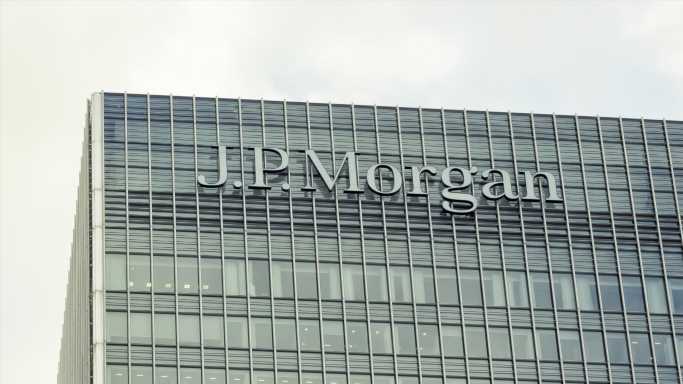The rising rate environment that we continue to find ourselves in has significant implications for the banking industry because it directly impacts their ability to earn on their lending business as well as their ability to generate funds through customer deposits.
As far as the loans are concerned, higher rates are positive in the sense that they allow banks to charge a higher rate for loans. But how much they can actually charge and the stability of these earnings depend on their brand and the quality of their client/loan base. Since big banks are better positioned in these respects, they are likely to be able to pass on the increased cost of funds. The smaller banks could have more trouble passing on the increased cost to their clients, which would result in shrinking net interest margins.
Rising interest rates increase the cost of borrowing. Therefore, corporate profitability suffers. The increased economic uncertainty and higher returns on cash encourage investors to keep some money as bank deposits, or in fresh bonds at the higher coupon rates. Therefore, bank deposits increase. For banks, this means increased competition to attract more of these deposits, which increases the cost of funds.
Additionally, with fresh bonds being issued at higher rates, the value of assets (bonds) held by banks falls, which again hurts their performance. While this drop in value is usually not so significant that it surpasses the value of liabilities and obligations that could lead to a bank failure, it is negative nevertheless.
Another effect of higher interest rates is a slowing economy. We have already, for some time now, been counting the various measures that seem to indicate an economic slowdown. When this happens, or in the worst-case scenario, if it leads to a recession, companies that are already seeing a slowdown in their business and an increase in their borrowing costs, are likely to delay their expansion and other investment plans. This is a negative spiral, and banks are at the receiving end.
If companies postpone spending, it means they will borrow less. So banks will be stuck with high-cost funds from which they’re unable to generate revenue. Long-term fixed deposits can provide some cushion since they’ve locked in a lower interest rate, but the situation starts to look worse from here on. In the event that a recession actually happens, there would be increased delinquencies, another setback for banks. In preparation for such an eventuality, banks start increasing their loan loss reserves.
Therefore, as banks enter the earnings season, there are a couple of things we should be looking out for:
First, the net interest margin, which is a factor of the volume and rate of deposits, as well as the volume and rate of loans. This would tell us something about the state of the economy, both with respect to investors and corporates.
Second, the provisions for loan loss reserves. Since banks increase provisions to deal with expected delinquencies, this is an early indication of their expectations regarding further economic weakness/softening and/or a recession.
Notably, the Zacks-classified Banks – Major Regional, Financial – Investment Bank, Banks – Southwest, Banks – Southeast, Banks – Northeast, Banks – West, and Banks – Midwest have low industry ratings, indicating that Zacks is not recommending the banking sector at this point. It follows that the Finance sector, of which the banks are a part, is ranked sixteen of a total sixteen Zacks-classified sectors.
Therefore, there are hardly any banking stocks that one can recommend right now.
JPMorgan Chase & Co. JPM is one exception, as its 2024 estimate continues to edge higher although it’s still down 2.7% from the 2023 estimate, which represents an 18.5% increase from the 2022 level. Analysts are largely in agreement about its improving prospects.
In Bank of America’s BAC case, we’re seeing a 6% increase in earnings this year, followed by a 3.4% decline in the next. The Zacks Consensus Estimate for 2023 is down about 3 cents from 60 days ago while that for 2024 is down 4 cents.
Citigroup C again is currently expected to see earnings shrink 16.9% this year, after which they’re expected to increase 5.9% in 2024. Most analysts agree that its fortunes are headed down, which s reflected in the 19-cent decline in its 2023 estimate and 2-cent decline in its 2024 estimate over the last 60 days.
Most analysts agree that Goldman Sachs’ GS prospects are weakening. They’ve collectively taken the Zacks Consensus Estimate for 2023 down $4.62 (14.4%) and the 2024 estimate down $1.98 (5.4%) in the last 60 days.
Analysts expect a 4.6% decline in Morgan Stanley’s MS 2023 earnings. The 2024 earnings are however expected to bounce back, representing an increase of 18.6%.
The Goldman Sachs Group, Inc. (GS): Free Stock Analysis Report
Bank of America Corporation (BAC): Free Stock Analysis Report
JPMorgan Chase & Co. (JPM): Free Stock Analysis Report
Morgan Stanley (MS): Free Stock Analysis Report
Citigroup Inc. (C): Free Stock Analysis Report
To read this article on Zacks.com click here.
Sponsored: Tips for Investing
A financial advisor can help you understand the advantages and disadvantages of investment properties. Finding a qualified financial advisor doesn’t have to be hard. SmartAsset’s free tool matches you with up to three financial advisors who serve your area, and you can interview your advisor matches at no cost to decide which one is right for you. If you’re ready to find an advisor who can help you achieve your financial goals, get started now.
Investing in real estate can diversify your portfolio. But expanding your horizons may add additional costs. If you’re an investor looking to minimize expenses, consider checking out online brokerages. They often offer low investment fees, helping you maximize your profit.
Source: Read Full Article
